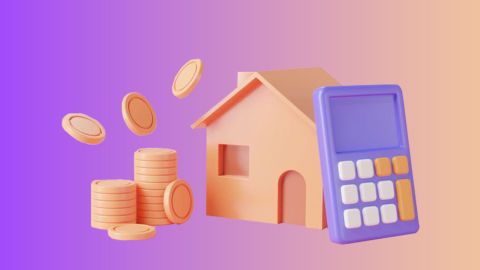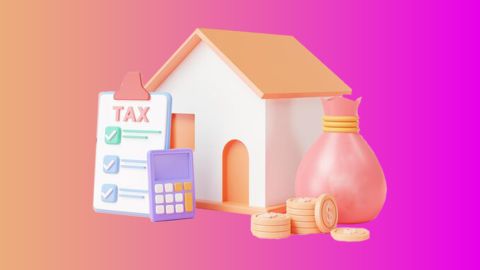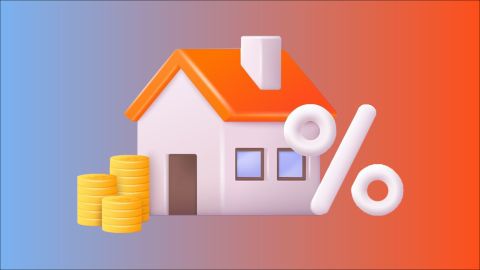Section 54 of the Income Tax Act lets you save tax on long-term capital gains (LTCG) earned from selling a house. If you sell a residential property and invest the proceeds to buy or build another residential property (within a specific time), you won’t have to pay tax on the gains.
Latest updates
Recent clarifications have made the rules under Section 54 more precise, especially around eligibility for capital gains exemption. The Income Tax Appellate Tribunal (ITAT) confirmed that only registered property sale agreements are valid for claiming exemption, as unregistered ones are not legally strong enough to qualify. It also ruled that properties like shops or single-room structures do not meet the definition of a “residential house” and hence cannot be considered for exemption.
In addition, the key points to remember are:
- Section 54 benefits apply only on long-term capital gains from selling a residential property.
- Exemptions can be claimed for reinvestment in a residential property within India.
- A maximum exemption of Rs. 10 crore is available.
- If the capital gain is up to Rs. 2 crore, the exemption may be claimed against the purchase of two houses. Otherwise, it applies only to one property.
- The option to claim for two properties is available just once in a taxpayer’s lifetime.
In this article, we will explain Section 54 of the Income Tax Act in detail. We will understand its meaning, who can claim the exemption, the key conditions to be met, and how to calculate the capital gains exemption available under this section.
Also, we will check out some important points you should know when selling a residential property.
What is Section 54 of Income Tax Act?
Section 54 of the Income Tax Act grants individuals or Hindu Undivided Families (HUFs) selling a residential property an exemption from capital gains tax if they reinvest the proceeds in another residential property. To qualify, the asset sold must be a long-term capital asset, specifically a residential house, with income chargeable as income from house property. Eligible sellers must purchase a residential house either one year before or two years after the sale, or construct a house within three years from the sale date. This provision aims to promote homeownership and facilitate property transactions while reducing tax burdens on individuals.
Planning to buy a new home to claim Section 54 benefits? Bajaj Finserv offers home loans starting at just 7.45%* p.a with flexible repayment options. You may already be eligible, check your loan offers by entering your mobile number and OTP.
Conditions for exemption under Section 54
Under Section 54 of the Income Tax Act, individuals and Hindu Undivided Families (HUFs) can save tax on long-term capital gains from selling a residential house by reinvesting the proceeds in another house property. However, firms, companies, LLPs, and other entities are not eligible for this relief. Below are the essential conditions explained in detail:
Key conditions
- The property sold must be a long-term capital asset (held for more than 24 months).
- The sold asset should be a residential house, and its income should be taxable under “Income from House Property.”
- The maximum exemption permitted is Rs. 10 crore.
- If the capital gain does not exceed Rs. 2 crore, the seller can reinvest in two residential houses and claim exemption on both. This special benefit can be used only once in a lifetime.
- The new residential house must be located within India; foreign properties are not eligible.
- The new property must be bought within 1 year before or 2 years after the sale. Alternatively, a new house can be constructed within 3 years from the date of sale or receipt of compensation (in cases of compulsory acquisition).
- Failure to meet even one of these requirements will disqualify the seller from claiming the exemption.
Time limits for purchase or construction
Time of acquisition |
Purchase time limit |
Construction time limit |
Before the sale of the property |
Within 1 year |
Within 1 year |
After the sale of the property |
Within 2 years |
Within 3 years |
Benefits of Section 54F of Income Tax Act
Section 54F of the Income Tax Act provides a range of tax relief benefits when long-term capital gains are reinvested in a residential property. Here's how it helps:
Promotes residential real estate investment
This provision incentivises individuals to shift their capital from non-residential to residential assets. By offering tax exemptions on gains used to purchase or build a home, it helps grow the residential property market.
Makes buying homes more affordable
The tax exemption significantly lowers the financial burden of buying a new house. This enables taxpayers to afford homes that might otherwise be out of reach, including premium or high-end properties.
Flexible investment routes
Section 54F allows reinvestment in either a ready-to-move-in residential property or one that is under construction. This flexibility ensures taxpayers can choose based on their financial situation and lifestyle needs.
Exemption available for NRIs
Non-Resident Indians (NRIs) can also take advantage of this exemption. It enables them to reinvest their long-term capital gains in India without being taxed, encouraging more property investments in their home country.
Boosts the real estate sector
By channelling more investments into housing, this section helps revitalise the real estate market and supports job creation and infrastructure development across urban centres.
Protection from market instability
Investing in residential property under Section 54F offers a relatively stable option, helping taxpayers avoid the risks of market volatility seen in stocks or other financial instruments.
Encourages urban housing development
The reinvestment incentive fuels construction of new residential properties, indirectly promoting urbanisation and better housing infrastructure.
Understand capital gains exemption under Section 54 of Income Tax
Section 54 of the Income Tax Act offers capital gains exemption to individuals or Hindu Undivided Families (HUFs) selling residential property in India. This provision allows them to reinvest the sale proceeds in another residential property, thereby avoiding capital gains tax. To qualify, the property sold must be a long-term capital asset, specifically a residential house. Eligible sellers must either purchase a new residential property within one year before or two years after the sale or construct one within three years. This exemption aims to encourage property ownership and stimulate investment in residential real estate.
What are the different types of capital assets under income tax?
The Income Tax Act, 1961, defines certain “capital assets” that attract capital gains liability. Usually, these assets increase in value. Some common examples are land, buildings, shares, or mutual funds.
For tax purposes, these assets are divided into:
- Short-term capital assets
and - Long-term capital assets
The classification depends on how long you hold them before selling. Let’s understand in detail:
Short-term capital assets
If you sell an asset within 24 months of buying it, it is called a short-term capital asset. Any profit you make is called a short-term capital gain.
Long-term capital assets
In contrast, if you hold the asset for more than 24 months, it becomes a long-term capital asset. The profit is treated as a long-term capital gain. It has different tax benefits.
However, please note that some assets have different rules. For example, if you own listed shares, equity mutual funds, or zero-coupon bonds, then just 12 months of holding makes them long-term.
Now, to avail of the Section 54 exemption, you must hold the house property for more than 24 months to qualify as a long-term capital asset. Only then can you reinvest the capital gain in another house and claim the tax benefit.
Looking to invest your capital gains in a new residential property? Bajaj Housing Finance Home Loan offers funding up to Rs. 15 Crore* with approvals in just 48 hours*. Check your loan offers today! You may already be eligible, find out by entering your mobile number and OTP.
LTCG and STCG Rates in 2023-24 and 2024-25
The Budget 2024 (announced on 23rd July 2024) brought some amendments in the rules around holding periods and tax rates (particularly for mutual funds). These changes apply from FY 2024-25 onward.
Two major changes are:
- The LTCG tax rate for equity mutual funds increased
and - The holding period required to qualify as long-term is reduced for some non-equity funds, like gold mutual funds and overseas FoFs.
In Budget 2025, no further changes were made to these capital gains rates. For more clarity, let’s have a look at the comparison of tax rates (FY 2023-24 vs. 2024-25) in the table below:
Mutual fund type |
Before (FY 2023-24) |
After (FY 2024-25) |
||
|
Short Term |
Long Term |
Short Term |
Long Term |
Equity Mutual Funds (more than 65% in equity) |
< 12 months: 15% |
> 12 months: 10% |
< 12 months: 20% |
> 12 months: 12.5% |
Debt-oriented Mutual Funds (more than 65% in debt) |
< 36 months: Slab rate |
> 36 months: Slab rate |
< 24 months: Slab rate |
> 24 months: Slab rate |
Equity Fund of Funds (FoF) |
< 36 months: Slab rate |
> 36 months: Slab rate |
< 24 months: Slab rate |
> 24 months: 12.5% |
Overseas Fund of Funds |
< 36 months: Slab rate |
> 36 months: Slab rate |
< 24 months: Slab rate |
> 24 months: 12.5% |
Gold Mutual Funds |
< 36 months: Slab rate |
> 36 months: Slab rate |
< 24 months: Slab rate |
> 24 months: 12.5% |
Important: Slab rate means the tax rate as per your income level. Budget 2024 also revised slab rates under the new regime. This impacts or changes your STCG liability as they are taxed at slab rates.
Eligibility criteria to avail of exemption under Section 54F
To make use of the exemption under Section 54F, a taxpayer must meet several key requirements:
Who can apply?
Only individuals and Hindu Undivided Families (HUFs) are eligible for the exemption. Companies, partnerships, or other types of organisations are not covered under this provision.
Nature of capital gain
The exemption applies to capital gains earned from the sale of any long-term capital asset except a residential house. These could include shares, commercial property, or land.
Timeline for reinvestment
The proceeds from the asset sold must be reinvested in a residential property within specific time limits:
For purchase: Within one year before or two years after the sale of the original asset.
For construction: Within three years from the date of sale.
Limit on residential property ownership
The taxpayer must not own more than one residential house (excluding the new one) at the time of sale of the original asset.
Restriction on additional purchases
To retain the exemption, the taxpayer should not purchase another residential property within two years or begin constructing another one within three years of the sale.
Investment must cover full net sale amount
To get the full exemption, the entire net consideration from the original sale must be reinvested. If only part of the proceeds is used, the exemption is granted proportionally.
Non-compliance results in taxability
Failure to meet any of the above conditions will nullify the exemption. In such cases, the capital gain will become taxable in the year the violation occurs.
Types of properties eligible for Section 54 exemption
- Residential houses qualify as long-term capital assets under Section 54.
- These can include apartments, independent houses, or any dwelling units used for residential purposes.
- The property must be owned and used by the seller for residential purposes.
- Vacant plots of land do not qualify for the exemption unless they are sold along with a residential house.
- Commercial properties or properties used for business purposes do not qualify for capital gains exemption under Section 54.
Conditions and limits of Section 54 exemption
- The property sold must be a long-term capital asset, specifically a residential house.
- The capital gains must be reinvested in another residential property.
- The new property must be purchased within one year before or two years after the sale, or constructed within three years.
- If the capital gains are not reinvested before the due date of filing the income tax return, they must be deposited in a capital gains account to claim exemption.
- The amount of exemption is limited to the capital gains invested in the new property.
How to claim Section 54 exemption: A step-by-step guide
- Calculate capital gains from the sale of your residential property.
- Purchase a new residential property within one year before or two years after the sale.
- Invest the entire capital gain amount into the new property.
- If the new property's cost is lower, invest the shortfall amount in the Capital Gains Account Scheme.
- Submit the necessary documents, including property purchase details and Form 10BA, with your income tax return.
- Seek assistance from a tax advisor to ensure compliance with all requirements.
Ready to purchase a new property to claim your Section 54 exemption? Bajaj Finserv offers hassle-free home loans with minimal documentation and doorstep service. Check your eligibility now! You may already qualify for compe, find out by entering your mobile number and OTP.
Documents needed for Section 54 exemption
To claim the Section 54 exemption, taxpayers typically require documents such as a sale deed for the old property, a purchase deed for the new property, a completion certificate if the new property is under construction, and bank statements showing the transaction details. Additionally, Form 10BA must be filled out and submitted along with the income tax return. Consultation with a tax advisor can ensure the completeness and accuracy of the documentation required for claiming the exemption.
What is the difference between Section 54 and 54F?
While both Section 54 and Section 54F offer exemptions on capital gains tax, they apply to different types of assets. Section 54 pertains specifically to the sale of residential properties and reinvestment in another residential property, while Section 54F applies to any long-term capital asset sold, excluding residential properties, with proceeds invested in a new residential property. Understanding these distinctions is crucial for taxpayers to maximise their tax savings effectively.
Impact of the Finance Act 2023 on Section 54
The Finance Act 2023 introduced significant changes to Section 54 of the Income Tax Act. The most notable amendment is the cap on the maximum exemption allowed. From the Assessment Year 2024-25, the exemption is limited to Rs. 10 crore. If the cost of the new residential property exceeds this amount, the excess will be ignored for computing the exemption. This change aims to prevent high net worth individuals from claiming large exemptions and aligns with the government’s goal of equitable tax benefits.
What are the provisions of Section 54 of Income Tax Act?
Here are the key provisions of Section 54 of the Income Tax Act:
- Exemption on long-term capital gains: Available when gains from selling a residential property are reinvested in another residential property.
- Time frame: Purchase within one year before or two years after the sale, or construct within three years.
- Eligible entities: Individuals and Hindu Undivided Families (HUFs).
- Exemption cap: Maximum exemption capped at Rs. 10 crore from the Assessment Year 2024-25.
Other topics you might find interesting |
|||
How to calculate capital gain exemption available under Section 54?
Using Section 54 of the Income Tax Act, you can save tax on long-term capital gains from selling a residential house. This tax saving is offered in the form of a tax exemption, which is the lower of these two amounts:
- The capital gain you earned
or - The amount you spent on the new house
Any leftover gain (if the property you bought costs less than the capital gain) will be taxed. For example, say Ms. Shruti earns Rs. 25 lakh as capital gain. She buys a new house for Rs. 10 lakhs. Now, she can claim only Rs. 20 lakh as exemption under Section 54. The remaining Rs. 15 lakh will be taxed.
Additionally, from Assessment Year 2024-25, the maximum exemption allowed is Rs. 10 crore. This means if your new house costs more than Rs. 10 crore, anything above that will not be considered for tax exemption. Let’s understand better through the exemption chart mentioned below:
Section 54 exemption limit chart (AY 2024-25 onwards)
Section |
Applies to the sale of |
Investment in |
Maximum exemption allowed |
54 |
Residential property |
New residential house |
Rs. 10 crore |
54F |
Any long-term asset (not a residential property) |
New residential house |
Rs. 10 crore |
What are the consequences of transferring the new house property within 3 years?
When you, as an assessee, sell a long-term residential property and use the profit to buy or build another home, Section 54 gives you a tax exemption.
But to keep this benefit, you must not sell the new house for at least 3 years from the date of its purchase or completion. If you do sell it within this 3-year period, the tax exemption you claimed earlier gets reversed.
This implies that the amount you saved in taxes earlier will now become taxable again in the year you sell the new property. It will be:
- Treated as a short-term capital gain
and - Taxed as per your income tax slab
However, there is also a special situation you must be aware of. If the builder delays handing over the new house to you, but the purchase or construction was done within the required period, the tax exemption still applies. That delay won’t cancel your benefit.
When is the cost of the new house treated as zero
If you sell the new house within 3 years, and its cost is less than the capital gains earned from the original sale, the tax department will treat the cost of the new house as zero.
As a result, the entire sale amount will be taxed as capital gain. This will increase your tax liability significantly.
Let’s understand better through an example:
- Say Mr. Raj sold his old residential property.
- He made a long-term capital gain of Rs. 40 lakhs.
- He claimed exemption under Section 54 by purchasing a new house for Rs. 30 lakhs.
Now, if Mr. Raj sells this new house within 3 years, the earlier exemption of Rs. 30 lakhs will be withdrawn.
- Let’s say he sells the new house for Rs. 35 lakhs.
- Since the exemption is withdrawn, the cost of the new house will be treated as Rs. 0 and (not Rs. 30 lakhs).
- So, the entire Rs. 35 lakhs will be taxed as short-term capital gain under his income slab.
Impact of the Finance Act 2023 on Section 54
Before the Finance Act 2023, there was no upper limit on how much capital gain you could save under Section 54. If someone sold a house and reinvested the 100% profit into a new residential property, they could claim an exemption on the entire amount.
However, starting AY 2024-25 (from April 1, 2024), the Finance Act 2023 introduced a cap of Rs. 10 crore. This means:
- If you sell a house and earn long-term capital gains
and - You reinvest the profit into a new house
now - You can claim exemption only up to Rs. 10 crore (even if the new property costs more)
For example, say you earned a capital gain of Rs. 12 crore and bought a house for Rs. 12 crore. Now, under the new rule, only Rs. 10 crore will be exempt, and Rs. 2 crore will be taxable.
Key points of Section 54 - Profit on sale of property used for residence
Section 54 provides relief from long-term capital gains tax when a residential property is sold and the gains are reinvested in another residential home. Here are the essential highlights:
Eligible taxpayer
Only individuals and Hindu Undivided Families (HUFs) qualify.
Type of asset sold
The exemption applies to the sale of a long-term residential property.
Type of new investment
To claim the exemption, the taxpayer must purchase or construct another residential house.
Timeframe for reinvestment
Purchase: The new home can be bought up to one year before or within two years after the sale of the original house.
Construction: Must be completed within three years after the original sale.
Exemption limit
The exemption amount is limited to the lower of either the long-term capital gain or the cost of the new residential property.
Capital gains account scheme (CGAS)
If the proceeds are not immediately invested, the amount should be deposited under CGAS before the income tax return deadline.
Important condition
If the new house is sold within three years, the earlier exempted amount will be deducted from its cost when calculating future gains.
Additionally, any unused amount deposited in CGAS will be taxed as capital gains once the deadline to use it expires.
Conclusion
Through Section 54 of the Income Tax Act, you can save tax on long-term capital gains (arising from selling a house property). If you use the sale proceeds to buy or build another residential property within the allowed time, you can claim full or partial tax exemption. However, from AY 2024-25, this benefit is capped at Rs. 10 crore.
Furthermore, only individuals and HUFs are eligible u/s 54. You must also follow all the rules related to timelines, asset types, and reinvestment. Be aware that missing these conditions can lead to the denial of the tax exemption.
Maximise your tax benefits while purchasing your dream home. Apply for a home loan from Bajaj Finserv with interest rates starting at just 7.45%* p.a* and loan amounts up to Rs. 15 Crore**. You may already be eligible, check your loan offers by entering your mobile number and OTP.
Popular calculators for your financial calculations






